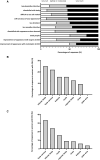Health-related Quality of Life, Social, and Psychological Well-Being of 109 Adult Patients With Genetic Lipodystrophy
- PMID: 39657019
- PMCID: PMC12261086
- DOI: 10.1210/clinem/dgae837
Health-related Quality of Life, Social, and Psychological Well-Being of 109 Adult Patients With Genetic Lipodystrophy
Abstract
Introduction: Lipodystrophy syndromes are rare diseases characterized by a generalized or partial lipoatrophic morphotype and metabolic complications. Data on health-related quality of life and impact of genetic lipodystrophy on social or psychological well-being are lacking.
Patients and methods: Patients with genetic lipodystrophy were recruited throughout the French national reference network for rare diseases of insulin secretion and insulin sensitivity. Patients completed a self-reported questionnaire exploring their physical, psychological, and social well-being and perceived impact of the disease. Descriptive analyses and comparison with general population norms were conducted.
Results: Of 175 eligible patients, 109 (84% of women) were included, either with familial partial (n = 93) or congenital generalized (n = 16) lipodystrophy. Health-related quality of life based on physical and mental scores was significantly decreased compared to the French general population of similar age and gender (P < .001 for both). Forty-one percent of patients reported moderate or severe depression and 69% dealt with chronic pain. Half of respondents had taken tranquilizers, sleeping pills, or antidepressants over their life. Female participants with genetic lipodystrophy were more frequently unemployed due to health issues as compared to the general population. Social discrimination was highly prevalent (73%), coming, in 34% of cases, from health professionals. More than half of affected women reported a very negative impact of lipodystrophy on body image, significantly associated with depressive symptoms.
Conclusion: This study highlights the need of psychosocial support in patients with lipodystrophy. An integrated approach and evaluation of psychological and physical symptoms by physicians should be made available to organize specialized care and set up specific therapeutic educational programs.
Keywords: lipodystrophy syndrome; psychosocial impact; quality of life; rare disease; self-report; well-being.
© The Author(s) 2024. Published by Oxford University Press on behalf of the Endocrine Society.
Figures




References
-
- Lim K, Haider A, Adams C, Sleigh A, Savage DB. Lipodystrophy: a paradigm for understanding the consequences of “overloading” adipose tissue. Physiol Rev. 2021;101(3):907‐993. - PubMed
-
- Mosbah H, Vatier C, Andriss B, et al. Patients’ perspective on the medical pathway from first symptoms to diagnosis in genetic lipodystrophy. Eur J Endocrinol. 2024;190(1):23‐33. - PubMed
-
- Yildirim Simsir I, Tuysuz B, Ozbek MN, et al. Clinical features of generalized lipodystrophy in Turkey: a cohort analysis. Diabetes Obes Metab. 2023;25(7):1950‐1963. - PubMed
MeSH terms
Grants and funding
LinkOut - more resources
Full Text Sources

